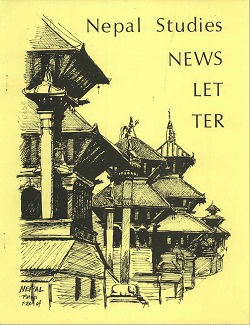Author Biography
Geoff Childs (Ph.D. in Anthropology and Tibetan Studies, Indiana University) is an Associate Professor of Anthropology and Environmental Studies at Washington University in St. Louis who specializes in studying the interconnections between demographic processes, global connections, economic changes, and family transformations in the highlands of Nepal and the Tibet Autonomous Region, China.
Namgyal Choedup (Ph.D. Candidate, Department of Anthropology, Washington University in St Louis) is in the process of dissertation writing after completing 18 months of fieldwork among Tibetan exile communities in India. His research interests are diaspora/transnational studies, national narratives and collective memory, development studies, demographic change, contemporary Tibetan societies, contemporary China and India. In addition, he has worked as a researcher with the Environment and Development Desk of the Tibetan exile administration.
Abstract
The harvesting and selling of yartsa gunbu (literally “summer grass, winter worm”; Ophiocordyceps sinensis) is contributing to economic and social transformations across the Tibetan Plateau and Himalayan region faster than any development scheme could envision. Meanwhile, the rising demand for the commodity has been linked to violence and environmental degradation, and has generated concerns over resource sustainability. Although good data is emerging on harvesting practices, medical uses, and the booming market for yartsa gunbu, especially in Tibetan areas of China, little systematic research has explored village-level management practices and socioeconomic impacts. This paper seeks to partially fill that void through a case study of the yartsa gunbu harvest in Nubri and Tsum, contiguous valleys in Nepal inhabited by ethnic Tibetans. Using data from household surveys and in-depth interviews, the authors describe the process of gathering and selling yartsa gunbu within the parameters of management practices that combine religious and secular regulations over natural resources. The authors conclude with a discussion of the indigenous management system in relation to sustainable development.
Acknowledgements
The authors would like to thank Sonam Lama for providing the majority of information on local policies in Tsum, Phurbu Tsewang for filling in some missing information on Nubri, Cynthia Beall and Sienna Craig for allowing us to use survey data from our 2012 research project, Georgina Drew for insightful comments on an earlier draft of the paper, and the two anonymous reviewers whose suggestions greatly improved the final version of the paper.
Creative Commons License

This work is licensed under a Creative Commons Attribution 4.0 License.
Recommended Citation
Childs, Geoff and Choedup, Namgyal. 2014. Indigenous Management Strategies and Socioeconomic Impacts of Yartsa Gunbu (Ophiocordyceps sinensis) Harvesting in Nubri and Tsum, Nepal. HIMALAYA 34(1).
Available at:
https://digitalcommons.macalester.edu/himalaya/vol34/iss1/7


